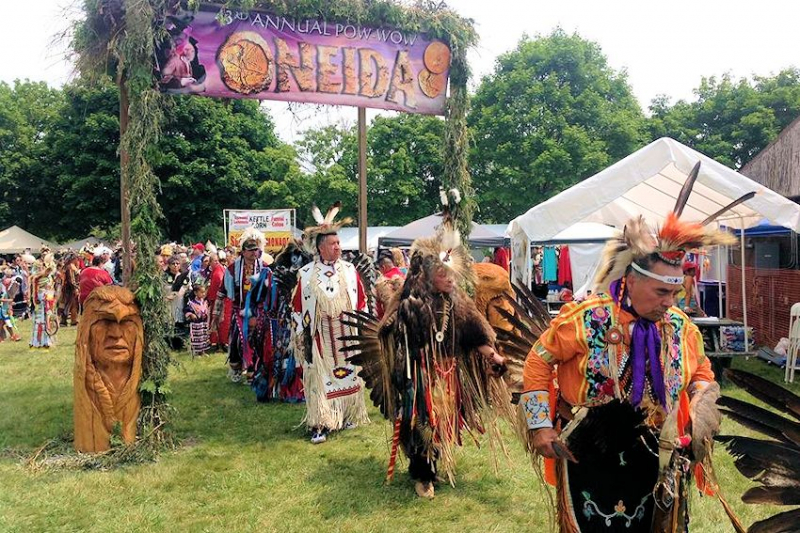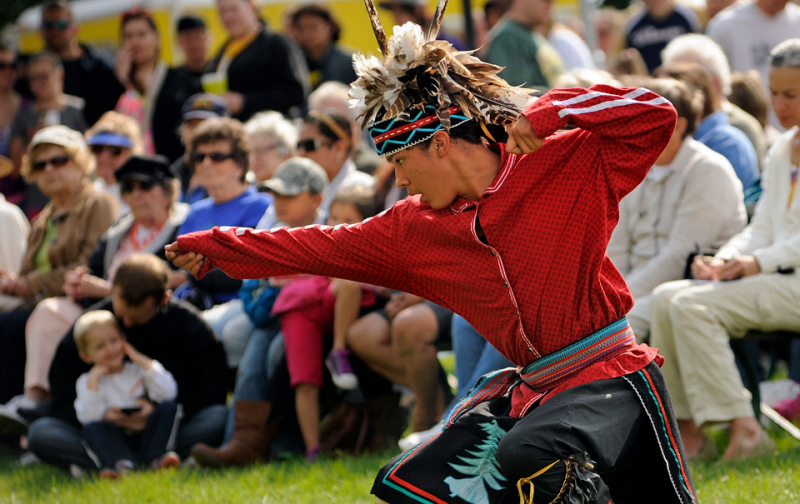Oneida
The Oneida, also known as Onyoteaká ("People of the Standing Stone"), were an Iroquoian-speaking North American Indian tribe that lived in what is now central New York state, U.S., at the time of European contact. They are one of the Iroquois (Haudenosaunee) Confederacy's initial five nations. The Oneida tribe of the Iroquois was semi-sedentary and engaged in grain farming. Families linked via maternal ancestry were housed in longhouses. There were three distinct clans among the Oneida, and each had three delegates in the confederation. A local council served as an advisory body to the chief or chiefs in each village.
The Oneida had only one palisaded town with 60 to 100 longhouses during the 17th century. It was destroyed by a French-Canadian expedition in 1696. The Oneida was the least populous of the Iroquois confederates at the time. After then, the neighborhood was split into Oneida (Upper Castle) and Canawaroghere. Oneida became the sixth nation of the Iroquois Confederacy when a village of North Carolina Tuscarora joined them in the early 18th century; for a generation, war parties targeted their former adversaries living in the Carolinas.
The Iroquois, commanded by the Mohawk leader Joseph Brant, were pro-British throughout the American Revolution, and as a result, the Oneida felt their wrath. Communities of Oneida people sought refuge behind American lines, and Oneida men worked as scouts for the young American troops. The U.S. government paid them back for their losses when they returned home after the war, and they took in the Mohegan nation's remains. Due to disagreements over Quaker missions, traditional religion, and the sale of lands, the Oneida split into factions in the years that followed. Few families remained in Oneida and Onondaga, New York by 1833; those who had not settled in Oneida on the Thames River in Ontario had migrated to Green Bay, Wisconsin.








